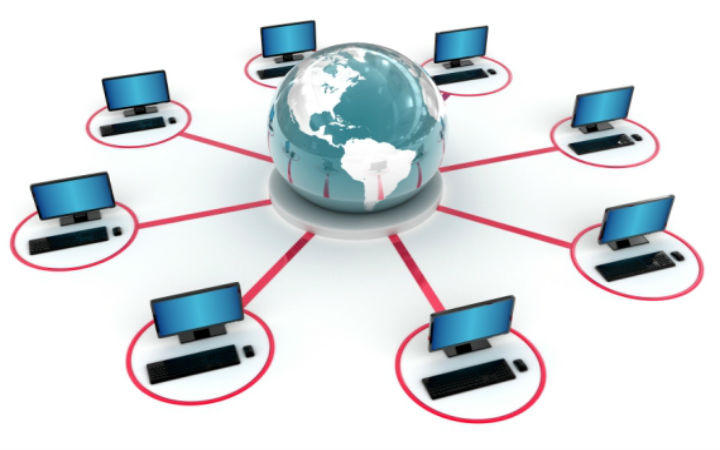Distributed Computing Projects.
Distributed refers spread out across space that is known as distributed computing. Distributed computing projects lays under computer science department. A program that is split up to part and seen simultaneously on multiple computers that communicates over network is distributed computing. Distributed computing projects are studies about the distributed systems. In distributed system the components located on network computers coordinate and communication only by passing message. Distributed computing is basically a collection of processors interconnected by a communication network in which each processor has its own local memory and other peripherals. Communication between any two processor of the system takes place by message passing over in communication networks.
Models of distributed computing projects.
Workstation model: Several workstations that are interconnected by communication network are contained under this model.
Minicomputer model:An elegant extension of centralized time sharing system is the minicomputer model.In this model distributed computing system contains limited minicomputers interconnected by communication network.
Workstation server model: Own disk and local file system are contained, whereas it is a network of personal work stations.
Hybrid model: It is a combination of processor pool and workstation server model that constructed to a hybrid model.
Processor pool model: Large number of minicomputers and micro computers are contained.

Distributed Computing characteristics.
Openers: With improvements and extensions of distributed systems openers is concerned.
Resources sharing: The ability to use data, software and hardware anywhere in system is known as resource sharing.
Concurrency: In distributed systems concurrency occurs from separate activities of users, location of server processes in separate computers and independent of resources.
Transparency: The complexity of distributed systems to the application programs and users are hidden in transparency.
Fault tolerance: The systems reliability is looked under fault tolerance for circumstances of network, hardware and software.
Scalability: To accommodate more users and for improvement in corresponding responsiveness of system scalability is concerned to increase the number of processor in the system.
Advantages of distributed computing projects:
Advantages of distributed computing projects are inherently distributed applications, reliable, resource sharing, flexible, information sharing among distributed users, and low cost, improved performance and reduced processing time.
Economics:Better performance ratio is attained when compared to mainframes.
Inherent distribution of application: Inherent distribution of some applications takes place (e.g.) ATM banking.
Speed: When related to mainframe more total computing power is contained in distributed system.
Extensibility & incremental growth: By adding more sources for processing power and functionality it is carried out without disturbing the rest of systems.
Reliability: The system could survive if there is a crash of one machine and we must have multiple storage devices and multiple server machines.
Applications of distributed computing projects.
- Telecommunication has a vital role in our life because it is based on distributed computing such as Telecommunication and cellular networks, computer network such as internet and different types of wireless networks.
- Airplane control towers and different type of industrial applications are also based on such computing.
- Different kinds of network applications are also based on this type of computing such as. Www (World Wide Web), peer to peer networks, Distributed databases and many more.
- Distributed computing is also used with parallel computation in different applications such as. Scientific Computing and Data rendering in distributed graphics etc.

